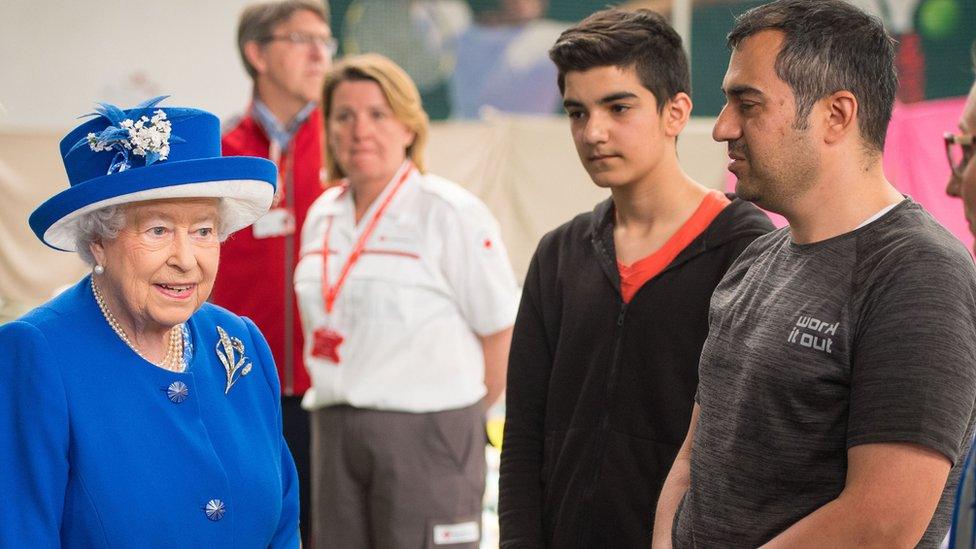Two years on from the Grenfell Tower fire - what has happened?
- Published
- comments
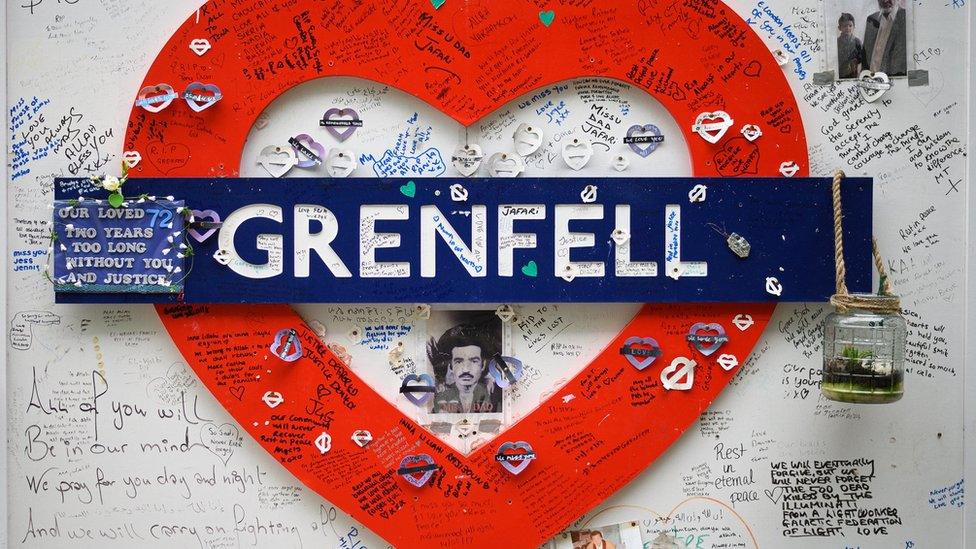
On 14 June 2017, at 1 o'clock in the morning, a terrible fire took hold of a tower block in the centre of London.
The fire damaged nearly every floor of the building - it is thought that the cladding that was put up on the sides of the tower made it spread more quickly.
72 people were killed as a result of this fire. Hundreds of people lost their homes, possessions and loved ones.
Today marks two years since that fire, and while some changes have been made, campaigners say there's a lot more left to be done to stop a fire like this happening again.
What happened to Grenfell Tower in 2017?
What happened at Grenfell Tower? Watch our explainer from 2018
It is thought the fire was caused by an electrical fault in a fridge.
However, the impact of the fire could have been made much worse because of the way the building was designed.
The cladding on the outside of the 24-storey building was flammable, which means it caught fire, and channelled the flames further up the tower.
There were also very few fire safety measures in the building, for example - a lack of sprinklers.
What has happened since then?
Grenfell Tower fire: 'It was pitch black, you couldn't see anything' Hear Naila talk about her experience. (2018)
An inquiry has been set up to find out why something like this happened.
Since the fire, 328 high-rise buildings have been identified as needing outside cladding removed.
While work has started to remove cladding from social houses, 221 of those buildings - many of which are privately owned - still have the cladding.
Social housing are buildings owned by the government.
Private housing is owned by a company or member of the public.
The government has put up £200 million to remove cladding from privately owned blocks.
But leaseholders (people who own private housing) say this is not enough to cover the costs.
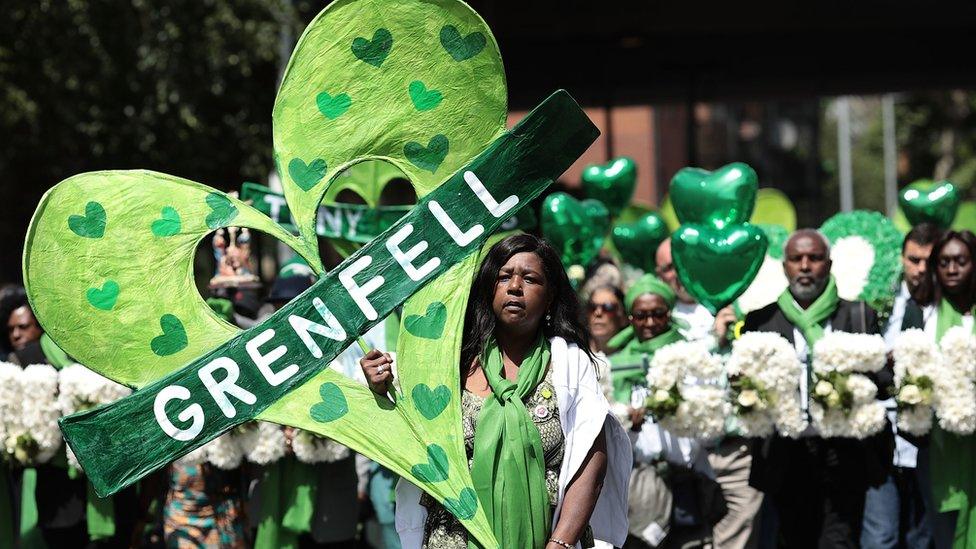
What about the survivors?
The feeling amongst many of the survivors and members of the public was that the safety of the people living in Grenfell Tower was not treated as important.
Grenfell United - a campaign group that was set up after the fire - says that the government needs to do more to protect people in social (government owned) housing.
They want a regulator (someone who can assess the quality and safety of buildings) so that residents have someone to voice their concerns to.
For years before the fire residents raised concerns about what was happening in the tower. They weren't just ignored they were bullied to be quiet.
There have been many controversies since the fire.
One in particular was the fact that many of the residents in Grenfell Tower and the surrounding tower blocks had said they were worried about the safety of their homes before the fire happened.
Residents say their views were ignored by the council in which they lived - the Royal Borough of Kensington and Chelsea.
Many people are disappointed in the way the government and the police have handled the aftermath of the fire.
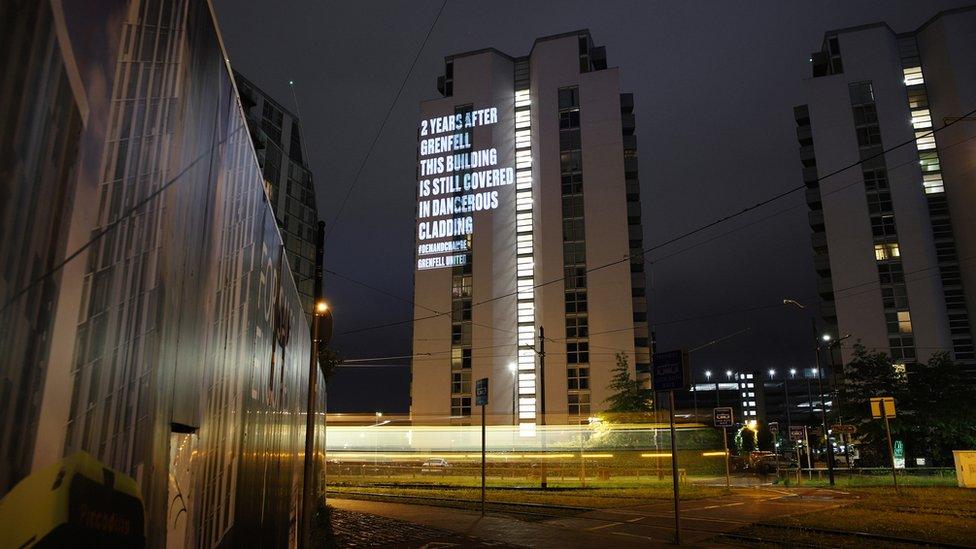
The message on this Salford block says it has dangerous cladding
The fire happened two years ago, but since then no one has been arrested for manslaughter (unintentional cause of death) or negligence (ignoring a problem), and the inquiry looks to run until at least 2020.
The police also say they will not charge anyone until at least 2021 - nearly four years after the fire.
There are 17 former residents of Grenfell who still have not been provided with permanent homes.
Lawyers running the inquiry say that it is taking such a long time due to the amount of evidence and paperwork.
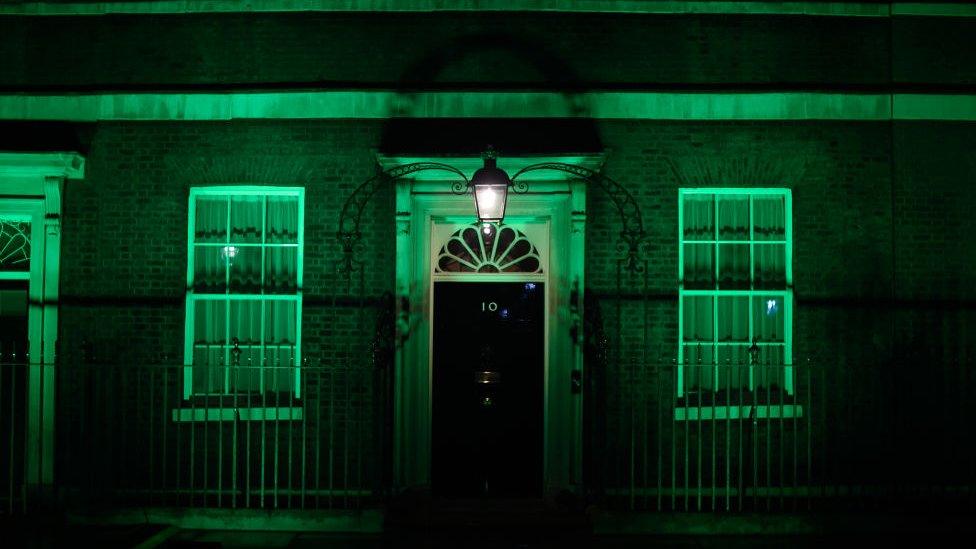
No. 10 Downing Street was lit up green on the second anniversary of the Grenfell Tower fire. Theresa May called the disaster "a local and a national tragedy with far-reaching consequences" which "we must not forget".
In 2017, Sir Martin Moore-Bick who is leading the inquiry, commented "I think it's impossible to say how long it's going to take; I have said on other occasions a matter of months, some people have talked about two or three months. I don't think that's realistic..."
He stated the aim of the inquiry to cover "the basic factual questions such as how did the fire start, how did it spread, how was it able to engulf the building in such speed and also questions such as what internal precautions there were, what steps were available for alerting residents and allowing them to escape."
But some say that this is not good enough.
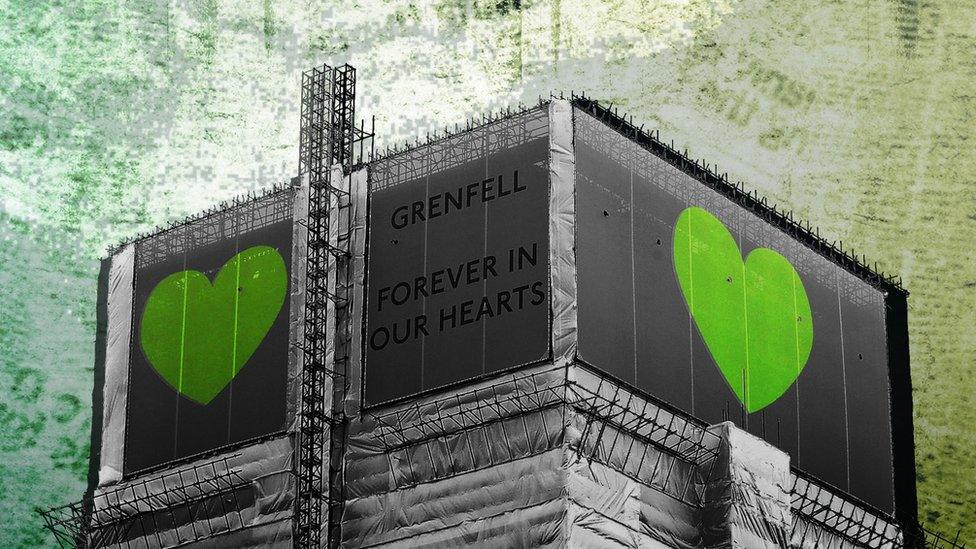
Information released a year after the Grenfell Tower fire found that only 2% of the UK's council run tower-blocks have sprinklers.
Since then, many of the survivors have taken the case into their own hands.
In the last few weeks, 177 survivors and families of 69 of the victims revealed they will be suing the US manufacturers of the cladding around the building.
What is happening now?
The inquiry and police investigation will continue into what happened.
But some are petitioning for the government to do more, including fitting more sprinklers and fire-safety doors to already existing buildings.
Home Secretary Sajid Javid tweeted: "We shall never forget the heartbreaking Grenfell fire. My thoughts are with those who lost their lives, homes & loved ones two years ago today. We will continue to support victims & ensure such an appalling tragedy never happens again."
Mr Javid was communities secretary at the time of the fire and promised a range of reforms to social housing in response to the tragedy.
Advice if you're upset by the news
If you are upset by this news, make sure you talk about how you are feeling with friends or a trusted adult. If you are struggling and there is no one you feel you can talk to about it, you can call Childline on 0800 11 11.
- Published18 September 2020

- Published14 June 2020
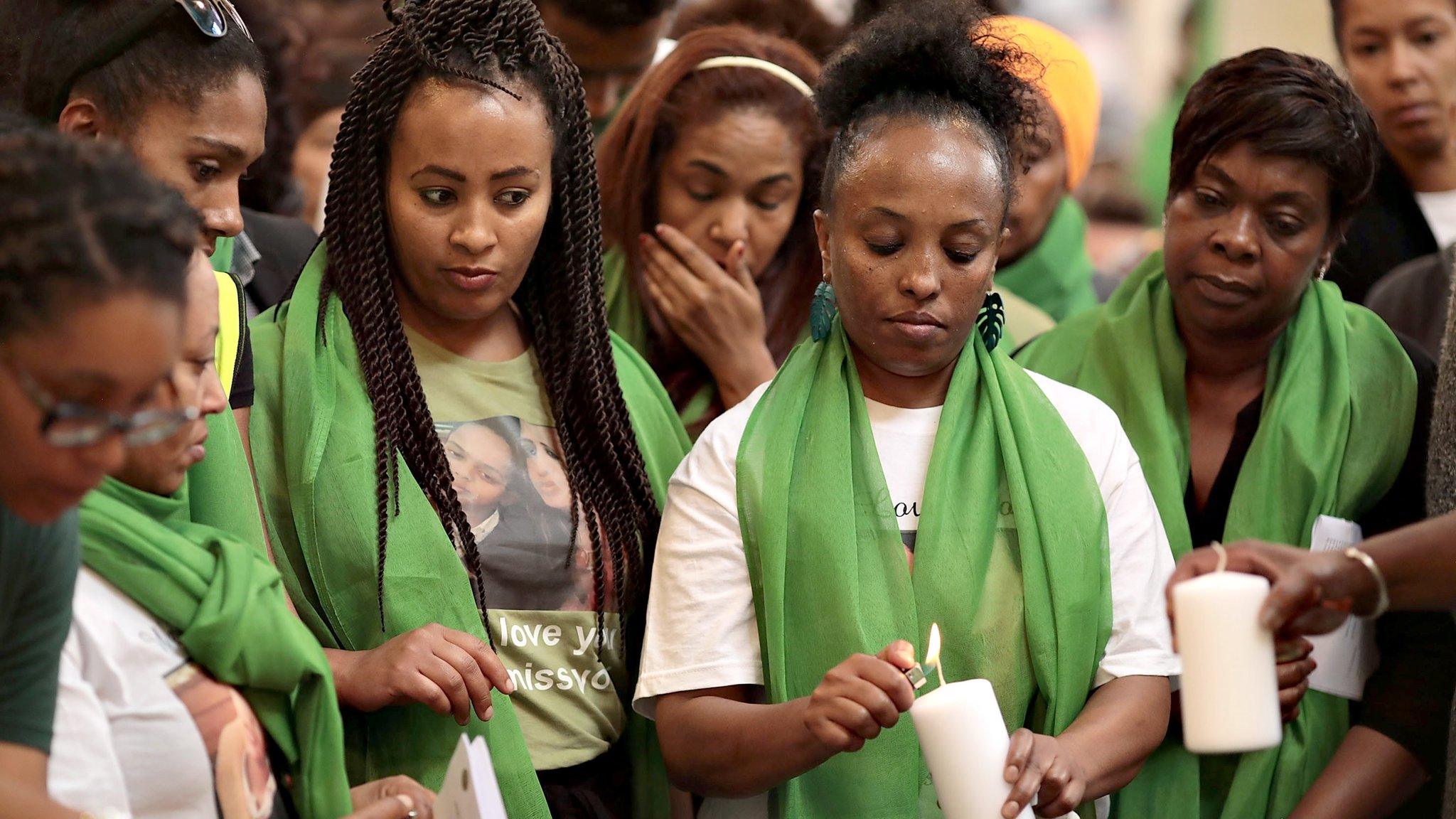
- Published14 June 2018
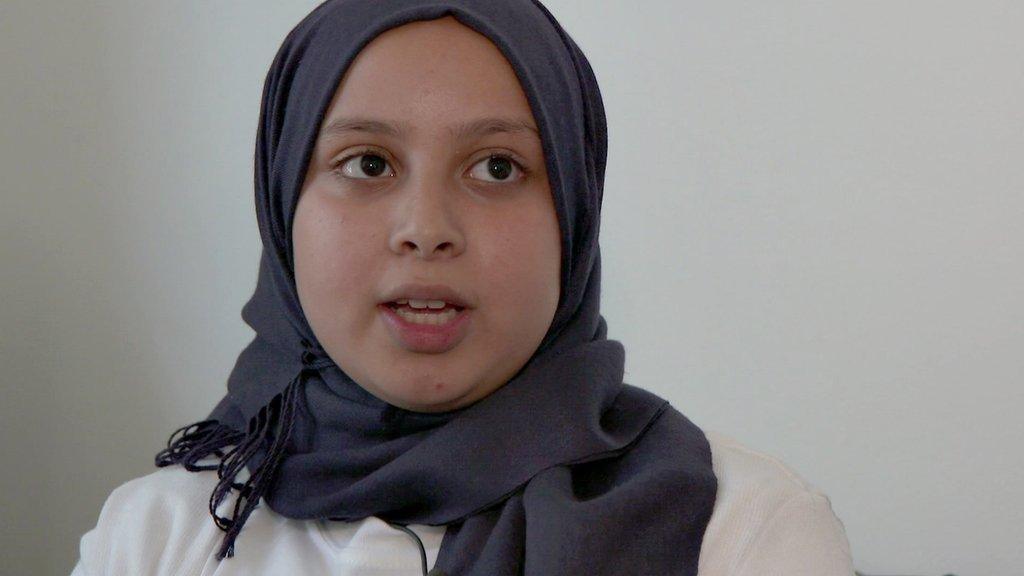
- Published19 June 2017
